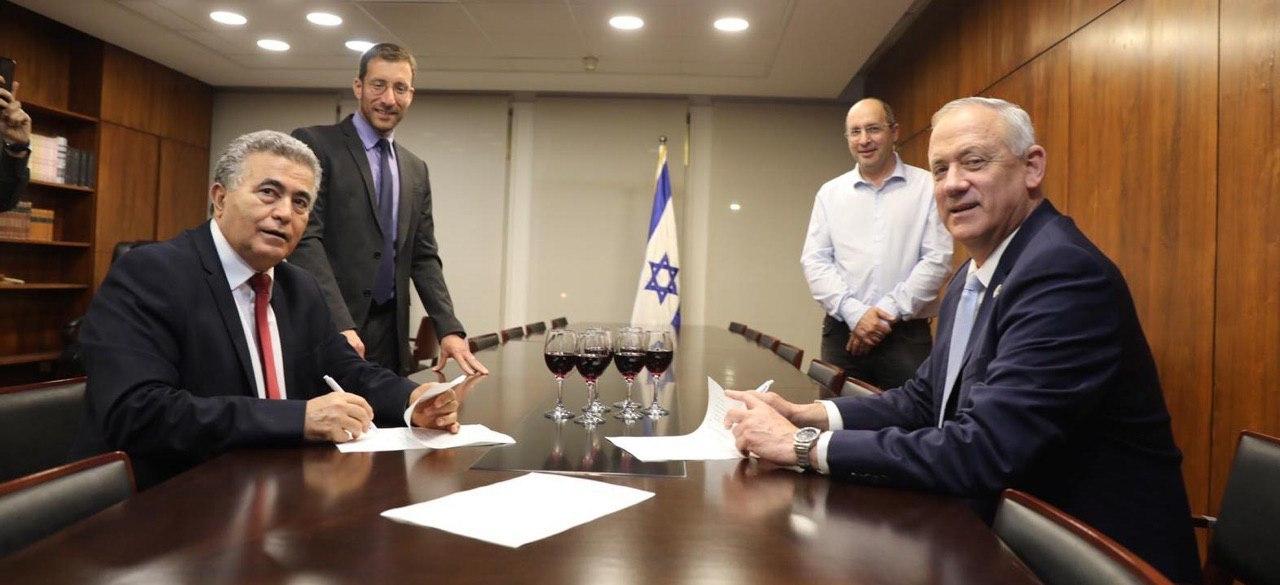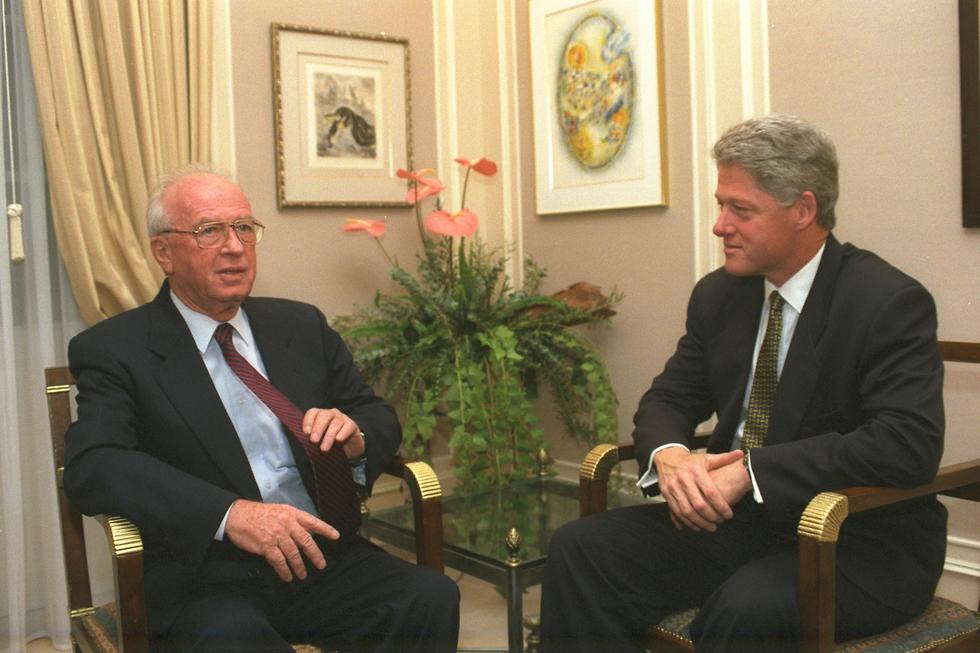Nine out of 10 Blue & White and Labor voters - who identify with the principles of the liberal center - felt a great betrayal over the decision by Benny Gantz and Amir Peretz to join the government of Prime Minister Benjamin Netanyahu.
One could focus on the tactical side of such the decision and brand Gantz a rookie and Peretz a political opportunist.
But to better understand the continuous erosion of the left-wing in Israel and around the world one must analyze the three basic components that make up political power - ideology, strategy and leadership.
5 View gallery


Amir Peretz and Benny Gantz signing the coalition agreement for a new government this week
The ideological element is both at the very heart of the liberal-centrist camp’s declining power and the accompanying strengthening of conservative-national parties across the globe.
European-American liberalism developed after World War II, shaping a world comprised of two camps. After the silencing of Soviet communism and even more so as China adopted capitalism, the global clash of these two ideologies was finally put to rest.
In its stead, the concept of a global village developed, gradually blurring the differences between the traditional left and right approaches, highlighting the sway of the corporate economy.
The capitalist narrative has become the leading influencer and as it did so the central pillar of the leftist ideology - a political and electoral force for the center- left - vanished.
Proof of this can be seen in the social platform of centrist parties such as Yesh Atid and Blue & White, whose economic platforms are not dissimilar to those of right-wing parties like the Likud.
5 View gallery


Yesh Atid leader Yair Lapid this week slammed the new government joined by his former political partner Benny Gantz
(Photo: Elad Guttman)
Even in the parties’ strategies, it is difficult to see significant differences between the center-left and the right when it comes to the global arena, the Middle East and even the Israeli-Palestinian conflict.
The decline in the pursuit of a diplomatic solution, coupled with the Israeli public's sense of futility, reflect not only the approach of the right-wing but also the approach of most of those who make up the political center in Israel.
There are many reasons for this, but let us focus on just two: The first is Palestinian President Mahmoud Abbas' policy of rejection and and the continued refusal of Hamas and the other Islamist movements to participate in any diplomatic process.
5 View gallery


Palestinian President Mahmoud Abbas at the United Nations easlier this year
(Photo: Reuters)
The second is the decline in the relevance of the Palestinian problem since the outbreak of the Arab Spring about a decade ago, when it ceased to be a major issue on the agenda of the region's countries.
Evidence of this can be witnessed in the attitude towards the Arab public in Israel, which is primarily influenced by the Israeli attitude towards the Palestinians. Blue & White and other center-left factions have steadfastly refused to form a government with even external support from the Joint List.
The decline in the strength of the ideological and strategic elements of the traditional center-left camp directly leads to questioning its leadership’s power.
It is not only Gantz and Peretz. All across the globe, the center-left is having difficulty producing meaningful, powerful leaders in the vein of John F. Kennedy, Bill Clinton, David Ben-Gurion or Yitzhak Rabin.
5 View gallery


Prime Minister Yitzhak Rabin and U.S. President Bill Clinton meeting in Jerusalem in 1994
(Photo: GPO)
In the U.S., Democratic Party has just picked 79-year-old Joe Biden as its leader, who, if elected, will begin his presidency at a ripe old age.
In Britain, former Labor leader Jeremy Corbyn caused a mass migration of traditional voters to the Conservative Party that has been in power since 2010.
The right-wing factions - which rely on both a firmer ideology and a better-understood strategy - are continuously producing far more attractive leaders.
Many voters around the world connect more easily with populist leaders such as Donald Trump or Hungary's Viktor Orban, who sanctify nationalism in tandem with corporate market economics.
In doing so, they enable the narrow minority that strengthens their regimes to amass capital while simultaneously providing a comfortable life for large swathes of the electorate.
The main issue that must now be addressed by Israel's center-left is not the "betrayal" by Benny Gantz, Gabi Ashkenazi and Amir Peretz, not is the question of who will be the camp's next savior.
The main issue facing the center-left is how to climb out of the deep pit dug by its lack of electoral appeal, which itself is derived from a lack of ideological and strategic clarity.
Without addressing these two issues, the center-left will have a hard time making a comeback or even acting as an effective brake for recent nationalist and anti-democratic trends.
Haim Tomer is the former head of the Intelligence Division in the Mossad


